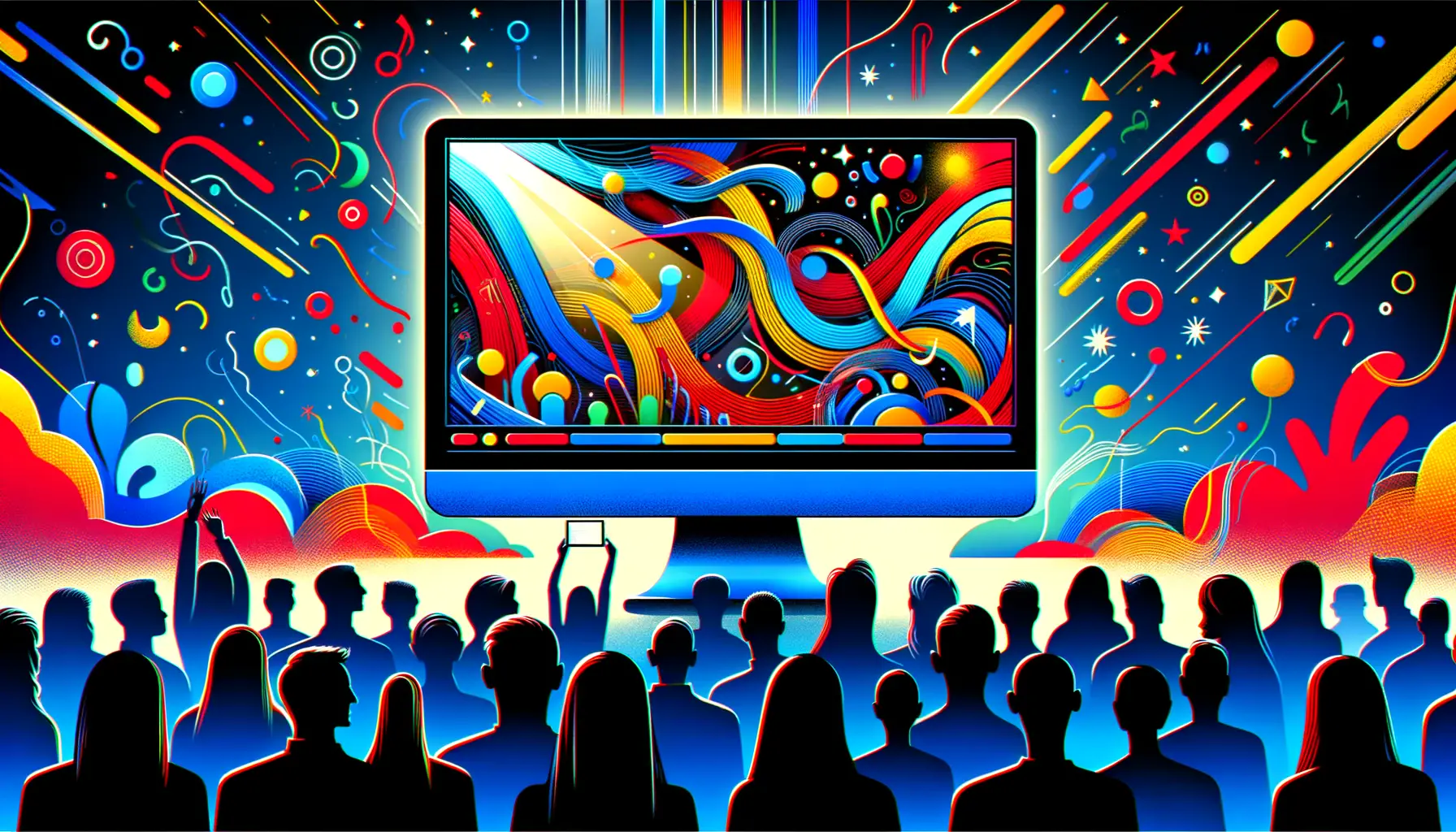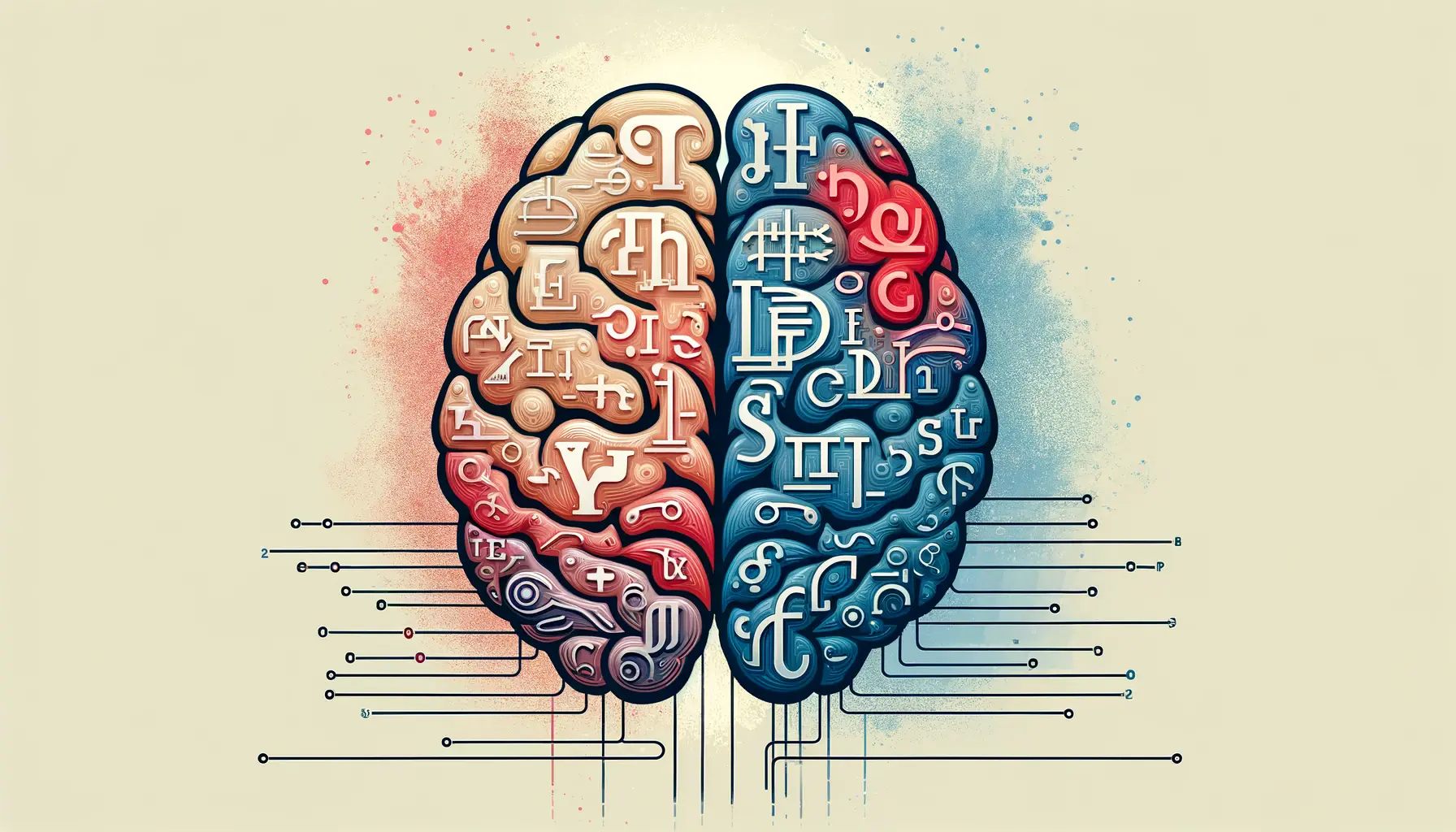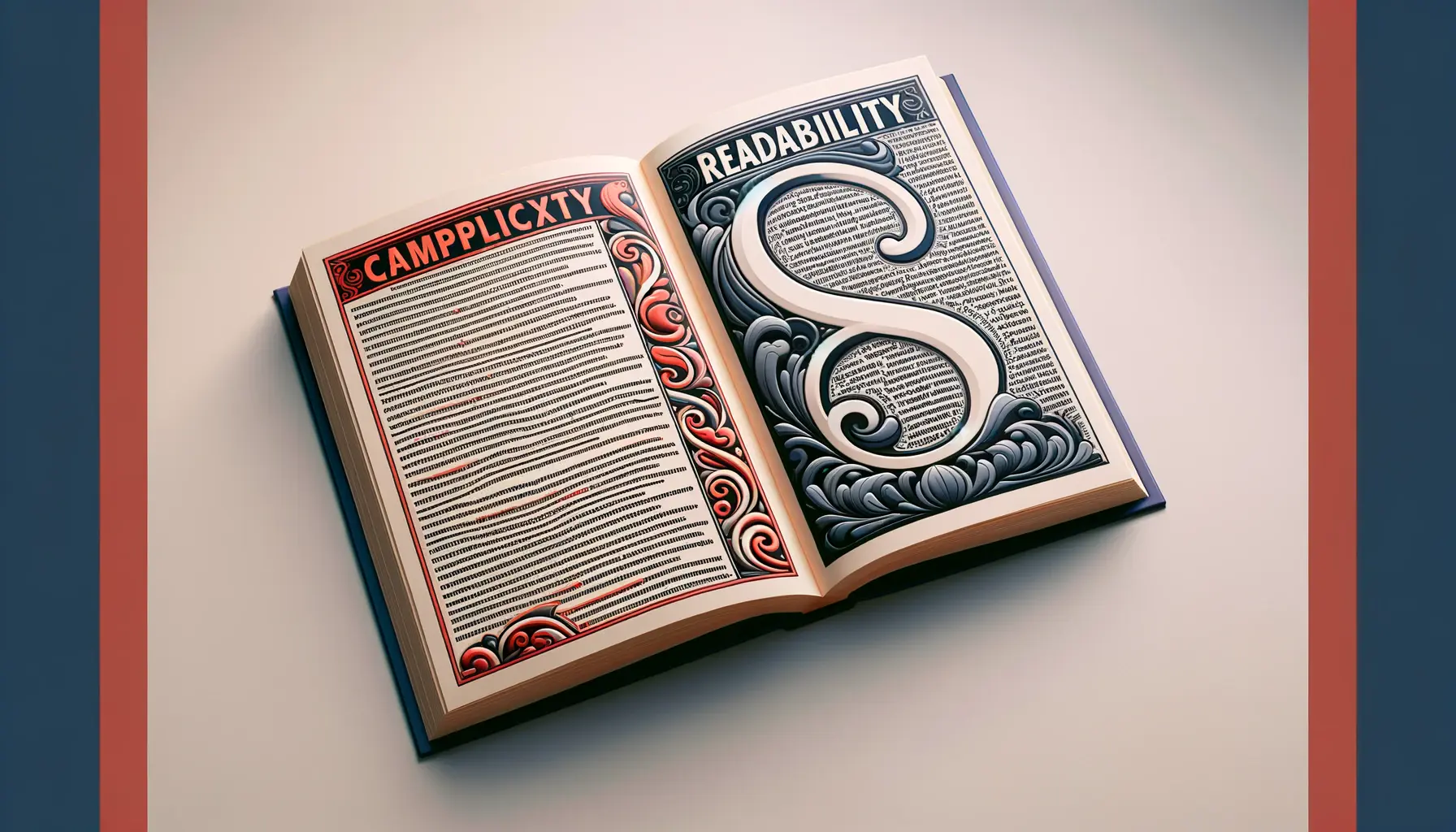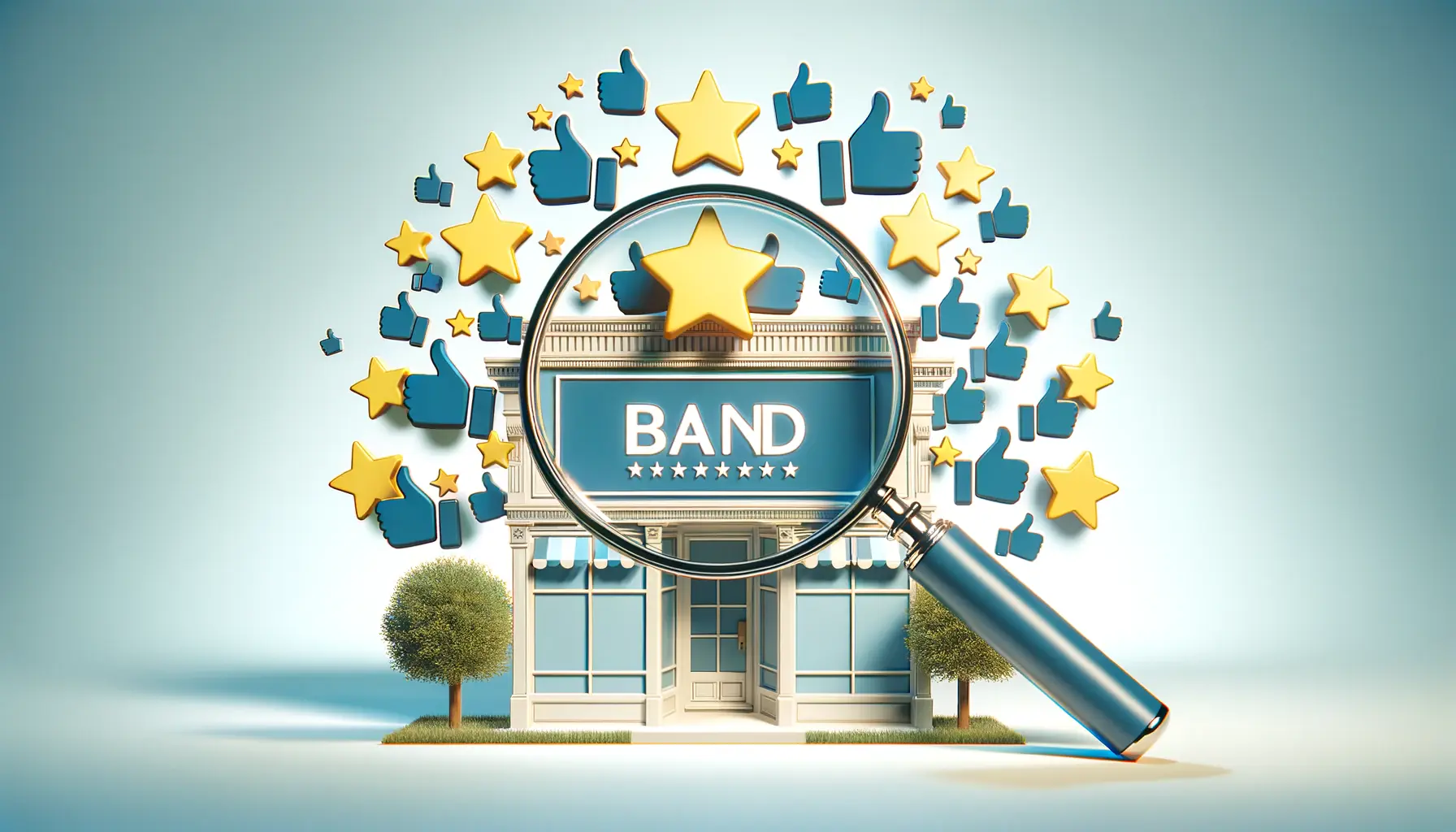In the digital age, where content is king and the battle for audience attention is relentless, animated typography emerges as a powerful tool in the arsenal of web designers, marketers, and content creators.
This dynamic form of visual communication combines the art of typography with motion graphics to breathe life into text, transforming static messages into engaging, interactive narratives.
Animated typography is not just about making words move; it’s about using motion to enhance the storytelling process, making information more digestible, and significantly boosting user engagement and retention.
The effectiveness of animated typography lies in its ability to capture and hold the viewer’s attention.
In a world where users are bombarded with information from all sides, standing out becomes imperative.
Animated typography does just that by adding a layer of depth and dimension to textual content.
It goes beyond traditional static text to evoke emotions, convey messages more powerfully, and create a memorable experience for the audience.
This innovative approach to presenting content taps into the visual and kinetic learning styles, making it a versatile and impactful communication strategy.
- The Evolution of Animated Typography
- Key Benefits of Animated Typography in Digital Content
- Design Principles for Effective Animated Typography
- Technological Advances in Animated Typography
- Animated Typography in Marketing and Branding
- Challenges and Solutions in Animated Typography
- Future Trends in Animated Typography
- Embracing the Future with Animated Typography
- FAQs on How Animated Typography Engages Online Audiences
The Evolution of Animated Typography
The journey of animated typography from its inception to its current status as a digital design trend reflects its growing importance in engaging online audiences.
Initially used in film and television for opening credits and title sequences, animated typography has found its way into the digital realm, thanks to advancements in technology and software.
Today, it’s a staple in web design, social media, and online advertising, offering endless possibilities for creativity and innovation.
As digital platforms evolve, so does the application of animated typography.
It’s no longer just about making text move; it’s about creating an immersive experience that enhances the overall narrative.
Designers and content creators are constantly exploring new ways to integrate motion into typography, from subtle animations that guide the reader’s eye to complex sequences that tell a story on their own.
This evolution signifies a shift towards more interactive and engaging forms of communication, where animated typography plays a crucial role in capturing the audience’s imagination.
Why Animated Typography Captivates
Animated typography captivates audiences by merging the visual appeal of motion graphics with the clarity and expressiveness of text.
This combination creates a unique visual language that can convey complex ideas in an intuitive and engaging manner.
By animating text, designers can emphasize key points, express brand personality, and guide the viewer’s attention through the content.
This not only makes the message more memorable but also enhances the user’s understanding and retention of the information presented.
The versatility of animated typography allows it to be used across various mediums and platforms, making it an invaluable tool for digital marketing.
Whether it’s a promotional video, an educational tutorial, or an interactive web page, animated typography can adapt to the specific needs of the content, adding value and effectiveness to the communication strategy.
Its ability to engage and captivate makes it a preferred choice for brands looking to make a lasting impression on their audience.
Animated typography transforms static text into an engaging narrative, making it a powerful tool for capturing audience attention in the digital landscape.
Key Benefits of Animated Typography in Digital Content
Animated typography offers a myriad of benefits that extend beyond mere aesthetic appeal.
Its strategic implementation can significantly enhance digital content, making it more engaging, accessible, and memorable.
Here are some of the key advantages of incorporating animated typography into your digital strategy:
- Enhanced User Engagement: Motion captures attention more effectively than static images or text. By animating typography, you create a dynamic visual experience that encourages users to spend more time with your content.
- Improved Message Clarity: Animated typography can help emphasize important points, making it easier for audiences to understand and remember your message. Strategic animation can guide viewers through your content, highlighting key takeaways.
- Increased Emotional Impact: The movement of text can evoke emotions, setting the tone for your message. Whether you’re aiming for excitement, curiosity, or urgency, animated typography can help convey the desired emotional response.
- Greater Accessibility: By animating text to sync with audio or visual cues, you can make your content more accessible to a wider audience, including those with hearing or visual impairments.
- Brand Differentiation: Unique animated typography can become a signature element of your brand’s visual identity, helping you stand out in a crowded digital landscape.
Applications of Animated Typography in Digital Media
Animated typography finds its application across a wide range of digital media, demonstrating its versatility and effectiveness in engaging online audiences.
Here are some common uses:
- Website Design: From hero banners to call-to-action buttons, animated typography can enhance the user interface and user experience, making websites more interactive and engaging.
- Social Media Content: Animated quotes, announcements, or promotions on social media platforms can grab users’ attention and increase engagement rates.
- Online Advertisements: Incorporating animated text in ads can make them more eye-catching and memorable, improving click-through rates.
- Educational Videos and Tutorials: Animated typography can make learning more enjoyable and effective, especially when explaining complex concepts.
- Email Marketing: Animated headers or call-to-action texts in emails can increase open and click rates by adding a visual appeal.
Each of these applications demonstrates the power of animated typography to transform digital content, making it more dynamic, accessible, and engaging.
By carefully integrating motion with text, digital content creators can significantly enhance the impact of their message and foster a deeper connection with their audience.
Considering the benefits and applications of animated typography, it’s clear that this dynamic form of communication is not just a trend but a fundamental element in the future of digital content creation.
Design Principles for Effective Animated Typography
Creating compelling animated typography involves more than just making text move.
It requires a thoughtful approach to design, motion, and timing to ensure that the animation enhances the message without overwhelming the viewer.
Here are essential design principles to consider when crafting animated typography:
Harmony Between Text and Animation
The animation of the text should complement its meaning, not distract from it.
Choose motion effects that enhance the message your text conveys.
For instance, slow, flowing movements can evoke calmness or elegance, while quick, sharp transitions might convey excitement or urgency.
The key is to maintain a balance that supports the overall narrative.
Additionally, the choice of font plays a crucial role in animated typography.
The font style should match the tone of the message and the type of animation.
A mismatch between font and motion can lead to a confusing or disjointed viewer experience.
Timing and Pacing
Effective animated typography relies on precise timing and pacing.
The duration of each animated element should be carefully considered to ensure that viewers have enough time to read and comprehend the text.
Too fast, and the message may be lost; too slow, and you risk losing the viewer’s attention.
Implementing a rhythm in your animation can also help guide the viewer through the content, creating a more engaging and memorable experience.
This rhythm can be achieved by synchronizing the motion of the text with the background music or spoken narration, enhancing the overall impact of the message.
Focus on Readability
While animation can make typography more engaging, readability should never be compromised.
Ensure that the text remains legible throughout the animation, with clear contrasts against the background and sufficient spacing.
Avoid overly complex animations that might make the text hard to read.
Employing motion blur, easing, and other animation techniques can help maintain readability while adding a professional polish to your animated typography.
These techniques can smooth out transitions and make the animation feel more natural and less jarring to the viewer.
Use of Color and Contrast
Color and contrast are powerful tools in animated typography.
They can be used to draw attention to specific words or phrases, differentiate between different types of information, or evoke certain emotions.
When animating typography, consider how color changes or contrast adjustments can enhance the message and viewer experience.
However, it’s important to use color and contrast judiciously.
Too many colors or too high a contrast can be distracting and may detract from the message.
Aim for a palette that complements the overall design and enhances the legibility of the text.
Remember, the goal of animated typography is to enhance communication, not to overshadow the message with excessive design elements. By adhering to these design principles, you can create animated typography that captivates, communicates, and connects with your audience.
Technological Advances in Animated Typography
The evolution of animated typography is closely tied to technological advancements in software and web development.
These innovations have expanded the capabilities of designers and content creators, allowing for more complex and creative animations.
Here’s how technology has transformed the landscape of animated typography:
Software and Tools
Modern animation and design software have democratized the creation of animated typography, making it accessible to professionals and amateurs alike.
Tools like Adobe After Effects, Cinema 4D, and Blender offer sophisticated features for creating dynamic text animations.
These include:
- 3D animation capabilities for adding depth and volume to text.
- Advanced keyframing and motion paths for precise control over movement.
- Particle systems and effects to add flair and visual interest.
- Integration with other design software for a seamless workflow.
Additionally, web-based tools and platforms like Canva and Crello provide user-friendly interfaces for creating simple animated text effects, making this technology accessible to a broader audience.
Web Development Technologies
The integration of animation into web design has been significantly facilitated by advancements in web development technologies.
HTML5, CSS3, and JavaScript libraries such as GreenSock Animation Platform (GSAP) and anime.js have made it easier to implement sophisticated animations directly within web pages.
These technologies enable:
- Smooth, high-performance animations that enhance user experience without compromising speed or efficiency.
- Responsive animations that adapt to different screen sizes and devices, ensuring accessibility and consistency across platforms.
- Interactive animations that respond to user actions, such as scrolling, clicking, or hovering, making web content more engaging.
The adoption of these web technologies has opened up new possibilities for animated typography in web design, allowing for animations that are not only visually stunning but also functional and user-friendly.
Impact on User Experience and Engagement
The technological advances in animated typography have had a profound impact on user experience and engagement.
By enabling more complex and creative animations, these technologies have helped designers create content that is not only informative but also emotionally resonant and visually captivating.
This has led to:
- Increased time spent on web pages, as users are drawn in by the dynamic text animations.
- Improved comprehension and retention of information, thanks to animations that highlight key points and guide the viewer’s attention.
- Higher conversion rates, as engaging animations can encourage users to take action, such as clicking a call-to-action button or making a purchase.
As technology continues to evolve, we can expect to see even more innovative applications of animated typography, further enhancing the ways in which we communicate and interact with digital content.
Technological advancements have revolutionized animated typography, making it an essential tool for creating engaging and effective digital content.
Animated Typography in Marketing and Branding
Animated typography has become a cornerstone in the realms of marketing and branding, offering a dynamic way to convey messages and establish brand identity.
Its versatility and visual appeal make it an effective tool for capturing audience attention and differentiating brands in a competitive marketplace.
Here’s how animated typography is utilized in marketing and branding strategies:
Enhancing Brand Identity
Animated typography can be a powerful extension of a brand’s visual identity, providing a unique voice and personality to digital content.
Brands use animated text to:
- Emphasize core values and messages in a visually engaging manner.
- Create a consistent brand experience across various digital platforms.
- Introduce brand elements, such as colors and fonts, in motion to create memorable brand signatures.
By carefully crafting animated typography that aligns with their brand identity, companies can strengthen their brand presence and foster a deeper connection with their audience.
Improving Ad Campaigns
In the context of advertising, animated typography can significantly enhance the effectiveness of campaigns by:
- Making ads more eye-catching and likely to grab the viewer’s attention amidst a sea of static content.
- Conveying key messages quickly and effectively, even in silent or autoplay scenarios common on social media platforms.
- Adding a layer of creativity and innovation to ad content, making it more shareable and memorable.
Animated text in ads not only increases engagement rates but also contributes to higher conversion rates by compelling viewers to take action.
Boosting Social Media Engagement
Social media platforms are fertile ground for animated typography, where it’s used to:
- Enhance the visual appeal of posts and stories, making them stand out in crowded newsfeeds.
- Convey messages succinctly and effectively in formats where users are likely to engage with content quickly.
- Encourage shares and interactions, such as likes and comments, by creating visually appealing and engaging content.
Animated typography enables brands to create dynamic, engaging content that resonates with social media audiences, driving engagement and fostering community around the brand.
Creating Compelling Website Experiences
Websites utilizing animated typography offer:
- A more engaging and interactive user experience, encouraging visitors to explore further.
- Improved navigation cues through animated text, guiding users through the site in an intuitive manner.
- Enhanced storytelling, with animated typography bringing brand stories and product features to life.
Integrating animated text into web design not only captivates visitors but also contributes to a cohesive brand narrative, making the website a powerful tool for brand storytelling.
In marketing and branding, animated typography serves as a versatile tool for enhancing brand identity, improving ad campaigns, boosting social media engagement, and creating compelling website experiences.
Challenges and Solutions in Animated Typography
While animated typography offers numerous benefits for engaging online audiences, its implementation comes with its own set of challenges.
Understanding these obstacles and knowing how to navigate them is crucial for designers and content creators aiming to leverage animated text effectively.
Here are some common challenges and practical solutions:
Ensuring Cross-Platform Compatibility
One of the main challenges with animated typography is ensuring that animations display correctly across different devices and browsers.
Inconsistencies can lead to a compromised user experience.
The solution involves:
- Using web standards and technologies like CSS animations and SVG (Scalable Vector Graphics) that offer better compatibility across platforms.
- Testing animations on various devices and browsers during the development phase to identify and fix compatibility issues.
- Implementing fallback options for older browsers that may not support certain animation effects.
By prioritizing cross-platform compatibility, designers can ensure that animated typography delivers a consistent and engaging experience for all users.
Maintaining Performance and Load Times
Animations, especially complex ones, can impact website performance and load times, potentially deterring users.
To mitigate this issue:
- Optimize animation assets and code to reduce file sizes and improve loading speeds.
- Use animation sparingly and only where it adds value to the content, avoiding unnecessary complexity.
- Leverage browser tools and online resources to test and optimize website performance, ensuring animations do not hinder the overall user experience.
Keeping an eye on performance metrics allows for the creation of animated typography that is both visually appealing and efficient.
Striking the Right Balance
Finding the right balance between creativity and usability can be challenging.
Overusing animation or implementing it inappropriately can distract users and detract from the message.
To strike the right balance:
- Focus on the message first and use animation to enhance, not overshadow, the content.
- Consider the context and audience, tailoring the animation style and intensity to suit the content and viewer expectations.
- Collect feedback from user testing to gauge reactions and adjust animations accordingly, ensuring they contribute positively to the user experience.
By addressing these challenges with thoughtful solutions, designers and content creators can harness the full potential of animated typography to captivate and engage online audiences effectively.
Despite the challenges, the strategic use of animated typography can significantly enhance digital content, making it more engaging and memorable for viewers.
Future Trends in Animated Typography
The landscape of digital design is ever-evolving, with animated typography at the forefront of innovation.
As we look to the future, several trends are set to shape the way animated text is used in engaging online audiences.
These emerging trends not only reflect advancements in technology but also a deeper understanding of user engagement and interaction.
Here’s what to expect in the future of animated typography:
Integration with Augmented and Virtual Reality
As augmented reality (AR) and virtual reality (VR) technologies become more accessible, animated typography is poised to play a significant role in creating immersive experiences.
In AR and VR environments, animated text can guide users, provide context, and enhance storytelling, making digital experiences more interactive and engaging.
This integration will require designers to think three-dimensionally, crafting typography that moves and adapts within virtual spaces.
Adaptive Typography
The concept of adaptive typography, where animated text adjusts in real-time based on user interaction or environmental factors, is gaining traction.
This could include animations that change based on the time of day, user location, or even the viewer’s browsing behavior.
Adaptive typography offers a more personalized and responsive user experience, making digital content more relevant and engaging.
Increased Use in Educational Content
Animated typography has the potential to revolutionize educational content by making learning more interactive and enjoyable.
By animating key concepts and terms, educators can capture students’ attention and improve comprehension and retention.
This trend is likely to grow as more educational platforms and resources seek innovative ways to engage learners online.
More Sophisticated Animation Techniques
As software tools and web technologies continue to advance, we can expect to see more sophisticated animation techniques being applied to typography.
This includes the use of machine learning algorithms to create dynamic animations that respond to user input in real-time, as well as the exploration of new animation effects that push the boundaries of what’s currently possible.
Focus on Accessibility
As awareness of the importance of digital accessibility increases, future trends in animated typography will likely include a stronger focus on making animations accessible to all users, including those with disabilities.
This could involve developing standards and best practices for creating animations that are readable and comprehensible for users with visual impairments or other challenges.
The future of animated typography is bright, with endless possibilities for innovation and creativity.
By staying attuned to these trends, designers and content creators can continue to leverage animated text in ways that engage, inform, and delight online audiences.
Emerging trends in animated typography promise to enhance digital experiences, making content more immersive, personalized, and accessible for users worldwide.
Embracing the Future with Animated Typography
As we’ve explored the dynamic world of animated typography, it’s clear that this innovative form of visual communication is more than just a fleeting trend.
It’s a testament to the evolution of digital design, a bridge between traditional text and the interactive, multimedia-driven landscape of today’s online content.
Animated typography has the power to transform static messages into engaging, immersive experiences, capturing the attention and imagination of audiences worldwide.
The Power of Motion in Storytelling
At its core, animated typography is about bringing stories to life.
Through the strategic use of motion, designers can add depth and emotion to text, enhancing the narrative and making content more memorable.
Whether it’s through subtle movements that guide the reader’s eye or complex animations that tell a story on their own, animated typography enriches the digital storytelling process, making it more dynamic and impactful.
Key Takeaways for Designers and Marketers
- Animated typography enhances user engagement and message clarity, making it a valuable tool for digital marketing and branding.
- Technological advancements continue to push the boundaries of what’s possible with animated text, offering new opportunities for creativity and innovation.
- Despite its many benefits, implementing animated typography comes with challenges, such as ensuring cross-platform compatibility and maintaining website performance. However, with careful planning and optimization, these obstacles can be overcome.
- The future of animated typography looks promising, with trends like AR/VR integration, adaptive typography, and a focus on accessibility shaping the next wave of digital content.
In conclusion, animated typography stands at the intersection of design, technology, and storytelling, offering endless possibilities for engaging online audiences.
As we move forward, it’s clear that animated typography will continue to play a crucial role in the digital landscape, transforming how we communicate, learn, and connect with each other.
By embracing this dynamic form of communication, designers and marketers can create content that not only captures attention but also resonates deeply with viewers, leaving a lasting impression in the digital age.
Quality web design is key for a great website! Check out our service page to partner with an expert web design agency.
FAQs on How Animated Typography Engages Online Audiences
Explore the fascinating world of animated typography with our curated FAQs designed to enlighten you on its impact in digital communication.
Animated typography is the art of bringing text to life through motion, enhancing storytelling and viewer engagement.
It captures attention, enhances message clarity, and adds emotional depth to digital narratives.
Yes, by making content more interactive and visually appealing, it significantly boosts user engagement.
Absolutely, it aids in explaining complex concepts in an engaging and memorable way.
It creates a unique brand identity, making messages more memorable and distinctive.
Challenges include ensuring cross-platform compatibility and maintaining web performance without sacrificing design.
Integration with AR/VR, adaptive typography, and more sophisticated animation techniques are on the horizon.
Begin by exploring software like Adobe After Effects and practice with simple animations to understand motion principles.













